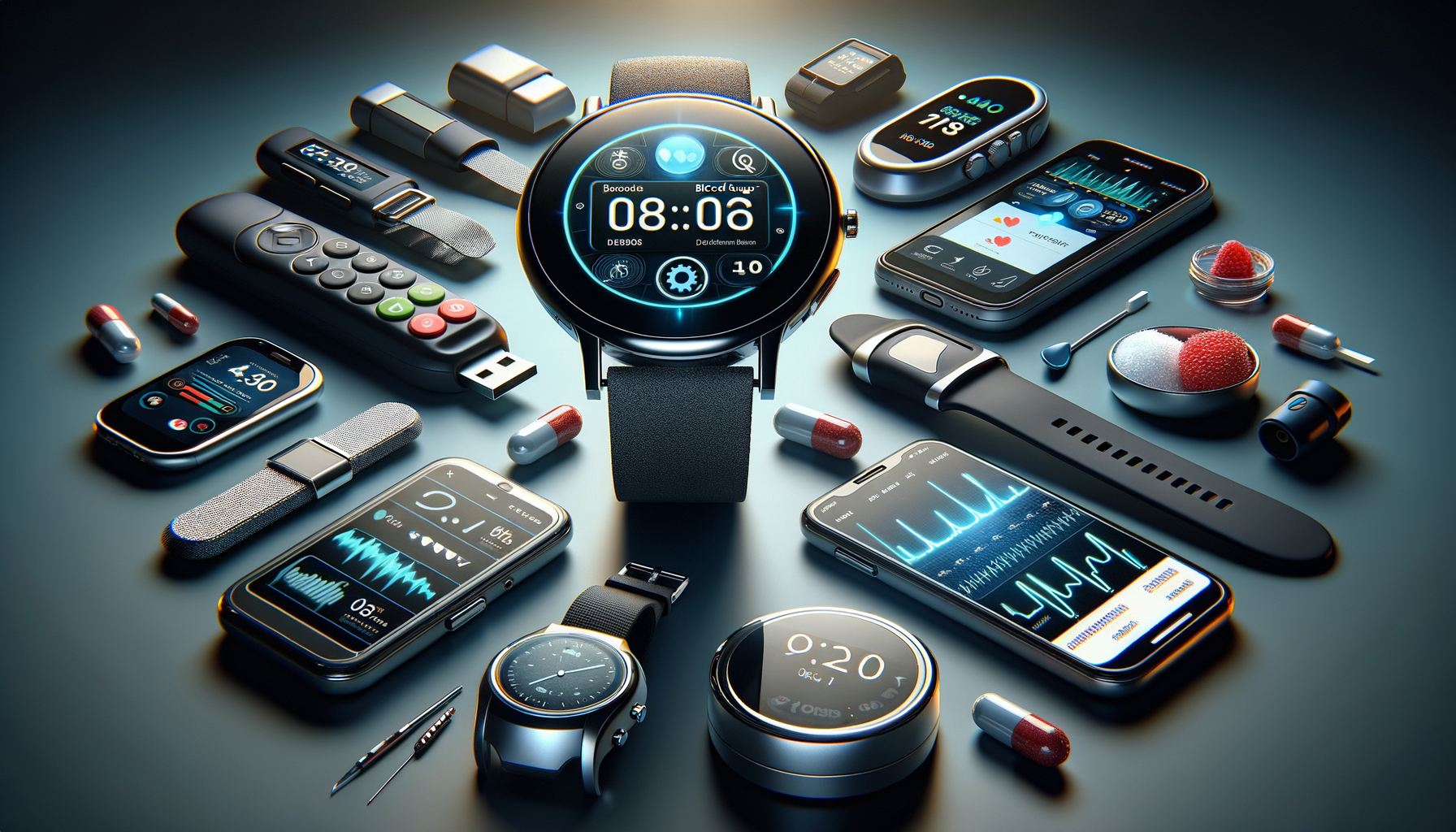Introduction to Diabetes Watches
The advent of diabetes watches represents a significant leap forward in the management of Type 2 Diabetes. These innovative devices offer a seamless way for individuals to monitor their blood sugar levels without the hassle of traditional methods. Diabetes watches are designed to provide continuous glucose monitoring, which is crucial for maintaining optimal health. By integrating technology with healthcare, these watches empower users to keep track of their glucose levels in real-time, enabling timely interventions and better overall management of the condition.
The convenience of diabetes watches lies in their ability to offer non-invasive monitoring. Unlike traditional finger-prick tests, these watches use advanced sensors to measure glucose levels through the skin. This painless method is not only more comfortable but also encourages more frequent monitoring, leading to better control over blood sugar levels. The data collected by these watches can be synced with smartphones, allowing users to analyze trends and make informed decisions about their diet, exercise, and medication.
Moreover, diabetes watches are equipped with features that go beyond glucose monitoring. They often include heart rate monitors, sleep trackers, and reminders for medication, making them comprehensive health management tools. As a result, users can gain insights into various aspects of their health, leading to a more holistic approach to managing Type 2 Diabetes.
Smart Watch Blood Sugar Monitoring: A Closer Look
Smart watches have revolutionized the way we approach health and fitness, and their role in blood sugar monitoring is no exception. These devices are not only stylish and multifunctional but also incorporate cutting-edge technology to help individuals with Type 2 Diabetes manage their condition more effectively. Smart watches with blood sugar monitoring capabilities offer a convenient and discreet way to keep track of glucose levels throughout the day.
The integration of blood sugar monitoring in smart watches is achieved through the use of advanced sensors that can detect glucose levels from the interstitial fluid under the skin. This non-invasive method eliminates the need for frequent finger-prick tests, making it more appealing to users. The data collected by the smart watch is then displayed on the device’s screen, providing users with real-time information about their glucose levels.
One of the standout features of smart watch blood sugar monitoring is the ability to set personalized alerts. Users can receive notifications when their glucose levels fall outside the target range, prompting them to take corrective actions. This proactive approach helps prevent complications associated with Type 2 Diabetes, such as hypoglycemia and hyperglycemia.
Furthermore, smart watches often come with companion apps that allow users to track their glucose levels over time. These apps provide valuable insights into patterns and trends, enabling users to make informed lifestyle choices. By combining blood sugar monitoring with other health metrics like heart rate and physical activity, smart watches offer a comprehensive view of an individual’s overall health.
Exploring Blood Sugar Monitor Watches
Blood sugar monitor watches represent a breakthrough in diabetes management technology. These devices are designed to offer continuous glucose monitoring, providing users with a real-time view of their blood sugar levels. This continuous feedback is invaluable for individuals with Type 2 Diabetes, as it allows for timely adjustments to diet, exercise, and medication.
The technology behind blood sugar monitor watches is based on the use of biosensors that detect glucose levels in the interstitial fluid. This non-invasive method is not only more comfortable but also encourages more frequent monitoring. The data collected by the watch is then transmitted to a smartphone app, where users can view their glucose levels and trends.
One of the key benefits of blood sugar monitor watches is their ability to provide alerts and notifications. Users can set personalized thresholds for their glucose levels, and the watch will notify them if their levels fall outside the desired range. This feature helps users take immediate action to prevent complications and maintain stable blood sugar levels.
In addition to glucose monitoring, these watches often include other health tracking features such as heart rate monitoring, physical activity tracking, and sleep analysis. This holistic approach to health management allows users to gain a comprehensive understanding of their overall well-being. By integrating these features, blood sugar monitor watches are becoming essential tools for individuals with Type 2 Diabetes.
Comparing Diabetes Watches to Traditional Methods
When it comes to managing Type 2 Diabetes, the choice between diabetes watches and traditional monitoring methods is an important consideration. While traditional methods like finger-prick tests have been the standard for many years, diabetes watches offer a modern alternative that brings several advantages.
One of the main benefits of diabetes watches is their convenience. Traditional methods require individuals to carry glucose meters and test strips, which can be cumbersome and inconvenient. In contrast, diabetes watches are worn on the wrist, providing continuous glucose monitoring without the need for additional equipment. This convenience encourages more frequent monitoring, leading to better control over blood sugar levels.
Moreover, diabetes watches provide real-time data, allowing users to make immediate adjustments to their lifestyle and treatment plan. This is a significant advantage over traditional methods, where individuals may only test their glucose levels a few times a day. The continuous feedback provided by diabetes watches helps users maintain stable blood sugar levels and prevent complications.
However, it’s important to note that diabetes watches may not be suitable for everyone. Some individuals may prefer the familiarity and reliability of traditional methods, especially if they have been using them for many years. Additionally, diabetes watches can be more expensive than traditional methods, which may be a consideration for some users.
Ultimately, the choice between diabetes watches and traditional methods depends on individual preferences and needs. Both options have their advantages and limitations, and it’s important for individuals to choose the method that best suits their lifestyle and management goals.
Conclusion: Embracing Technology for Better Diabetes Management
The integration of technology into diabetes management has brought about significant improvements in how individuals monitor and control their condition. Diabetes watches, smart watch blood sugar monitoring, and blood sugar monitor watches offer innovative solutions that cater to the needs of individuals with Type 2 Diabetes.
These devices provide continuous glucose monitoring, real-time feedback, and personalized alerts, empowering users to take control of their health. By offering a non-invasive and convenient way to track glucose levels, these watches encourage more frequent monitoring and better overall management of the condition.
As technology continues to advance, the options for diabetes management will only expand, offering even more tools for individuals to maintain optimal health. Embracing these innovations can lead to improved outcomes, greater convenience, and a better quality of life for those living with Type 2 Diabetes.
Ultimately, staying informed about the latest developments in diabetes technology can help individuals and caregivers make informed decisions about their health. By leveraging these advancements, individuals with Type 2 Diabetes can achieve better control over their condition and enjoy a healthier, more fulfilling life.




Leave a Reply